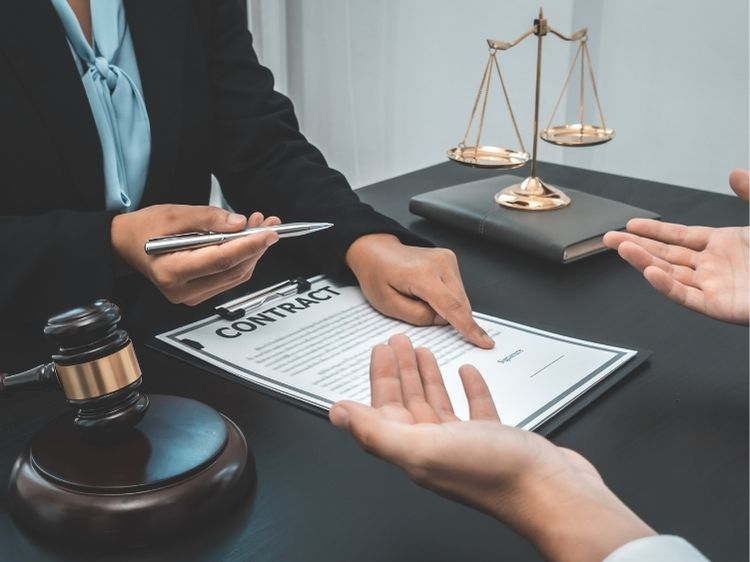Negligence in a Products Liability Action: A Comprehensive Guide
When it comes to consumer safety, the law provides several avenues for redress, particularly in cases involving defective products. One such legal remedy is a products liability action based on negligence. But what does this actually mean? How does negligence factor into a products liability claim? If you’ve ever wondered about these questions, you’re in the right place. Let’s dive into the intricate world of negligence in products liability actions and uncover what it all entails.
What is Negligence in a Products Liability Action?
Negligence in a products liability action revolves around the failure of a manufacturer, distributor, or seller to exercise reasonable care in the design, manufacture, or distribution of a product. When a product is deemed defective and causes injury, negligence can serve as the basis for a legal claim. Unlike strict liability, where fault doesn’t need to be proven, negligence requires the injured party to demonstrate that the defendant’s actions (or lack thereof) directly led to their injury.
Elements of Negligence in Products Liability
To successfully bring a negligence claim in a products liability case, the plaintiff must establish four critical elements:
- Duty of Care: The manufacturer or seller owed a duty of care to the consumer. This duty involves ensuring that the product is safe for its intended use.
- Breach of Duty: The defendant breached that duty by failing to act as a reasonably prudent person would under similar circumstances. This could include flaws in design, manufacturing, or failure to provide adequate warnings.
- Causation: The breach of duty must be directly linked to the injury. In other words, the plaintiff must prove that their injury was a foreseeable result of the defendant’s negligence.
- Damages: The plaintiff must have suffered actual harm or damages as a result of the defective product.
Common Examples of Negligence in Products Liability Cases
Negligence can manifest in various ways within products liability cases. Here are a few common examples:
- Defective Design: A flaw in the product’s design makes it inherently dangerous, even if manufactured perfectly. For example, a car with a high rollover risk due to a poor design could lead to a negligence claim.
- Manufacturing Defect: This occurs when a product deviates from its intended design, making it unsafe. An example would be a batch of pharmaceuticals contaminated during production.
- Failure to Warn: Manufacturers must provide adequate instructions and warnings about potential risks. If a product lacks sufficient warnings and a consumer is injured as a result, negligence can be claimed.
Proving Negligence in a Products Liability Action
Proving negligence in a products liability action can be complex, requiring thorough investigation and compelling evidence. Here are the steps typically involved:
- Gathering Evidence: This includes collecting the defective product, documentation, witness statements, and expert testimony to establish the product’s defect and the defendant’s negligence.
- Demonstrating Duty and Breach: The plaintiff must show that the defendant had a duty of care and breached it. This often requires expert testimony to explain industry standards and how the defendant failed to meet them.
- Establishing Causation: It’s crucial to link the breach directly to the injury. Medical records, expert opinions, and accident reconstruction may be necessary to prove causation.
- Calculating Damages: Finally, the plaintiff must quantify their damages, which could include medical bills, lost wages, and pain and suffering.
Defenses Against Negligence Claims in Products Liability
While negligence can serve as a strong basis for a products liability claim, defendants have several potential defenses at their disposal:
- Contributory Negligence: If the plaintiff’s own negligence contributed to their injury, it could reduce or eliminate their recovery.
- Assumption of Risk: If the plaintiff was aware of the product’s risks and voluntarily chose to use it anyway, this defense might apply.
- Comparative Fault: In some jurisdictions, the plaintiff’s recovery can be reduced based on their percentage of fault in the incident.
FAQs About Negligence in Products Liability Actions
Q: What distinguishes negligence from strict liability in products liability cases?
A: Negligence requires proof of a breach of duty leading to injury, while strict liability focuses on the defectiveness of the product itself, regardless of fault.
Q: Can I sue for negligence if I was not the direct purchaser of the product?
A: Yes, in many cases, you can sue as long as you were injured by the product. Privity of contract is not always required in products liability actions.
Q: What damages can I recover in a negligence-based products liability claim?
A: You can typically recover compensatory damages, including medical expenses, lost wages, and pain and suffering. In some cases, punitive damages may also be awarded.
Q: How long do I have to file a negligence claim in a products liability case?
A: The statute of limitations varies by jurisdiction, but it’s generally advisable to file as soon as possible to preserve your rights.
Q: Can multiple parties be held liable in a products liability action?
A: Yes, multiple parties involved in the design, manufacture, and distribution of the product can be held liable for negligence.
Conclusion
Negligence in a products liability action is a critical aspect of consumer protection, providing a pathway for those injured by defective products to seek justice. Understanding the elements of negligence, common examples, and the process of proving such claims can empower consumers and their legal representatives to navigate these complex cases effectively. By holding manufacturers and sellers accountable, the law ensures that products on the market meet safety standards, ultimately safeguarding the public.
As with any legal matter, it’s essential to consult with an experienced attorney who can provide guidance tailored to your specific situation. If you believe you’ve been harmed by a defective product, don’t hesitate to explore your legal options.

